Does your big buckle show any evidence of being curved like a shoe buckle?
If flat and that big, I'm thinking horse equipment of a strap adjuster. I looked for pics but other than the one posted by CTwoods and possibly another on an old Tnet post (presumed to be a shoe buckle), I saw nothing that big.
Do you know anything about the property dwellers? Indentured labor perhaps? And the fancy stuff belonged to the master...
Matt, the one I showed is just too darn dainty to be for something like a working harness, and it seems way too big to be some sort of sash buckle.
A lot of different shapes of buckles found in areas that were founded in late 1600s to late 1700s; websites seem to give conflicting info on what certain shapes were for. Another nice buckle from my same site is a "half frame batwing". I found one Rev war info site that insists that shape was a "rare" Rev War musket sling buckle and one resides in a Saratoga war museum. Others say it is animal work harness.

More new info comes to the internet each year, so I put things aside, and maybe a better answer will show up somewhere.
Just took a look and no trace of curve and the hammered silver doesn't have any stress marks where a flattened curve would show. It has some natural contours, but only a few mm up and down. Let me get some more photos together as that may help.
Unfortunately not a lot of information on this site. The name on the maps doesn't correspond to any local historical records and this site was actually left off of one of the Beers maps along with the entire road! Until these buckles I thought this was a short-lived civil war-era homestead; built and then abandoned not long after. One thought I had was maybe these buckles are independent of the cellar hole. This is a (very) crude drawing of where I found them in relation to the home site:
Maybe the buckles were lost or tossed away by someone using the road years before the homesite?
Just some thoughts from my area: I talked with a younger member of a local 750 acre farm that was first settled/cleared by this family over 300 years ago. He said their family history said they got the land, built a quick log home on dirt. Then spent 7 years living there, while a big permanent barn for feed and livestock was built, and also cleared all the land. Only then, was the new permanent home on a dug/stone foundation built (on a different area, as they still had to live in the log home while building the new one)
My buckle came with literally hundreds of cool artifacts, every type of button/buckle/stoneware frags/early coins dating back to 1726 Reale and slicks including a counterfeit copper that has so much zinc, it is brass color. Almost no glass except a few thick extremely dark olive green pieces. This site "never" had a home,
according to all the maps I can find. There are no stones anywhere, maybe house was on dirt, or stones were taken away. It has been a cornfield as far back as locals can recall. But I know it was a home, in use a long time. Just way too many artifacts there, including house things like thimbles
My only point is that we need to keep reviewing each site with a very open mind. Your sketch of the buckles near the stone wall, makes me recall a recent video that reminds us that each time a new stone was tilled up each spring, or popped up in the cart path road, they carried it to a wall. So things like buttons and buckles do pop off in heavy work near walls.
We wonder how a person could not see a lost buckle, until we trudge through 30-40 inch deep snows, or mud season. I recently read that there was a mini ice age in 1550-ish through the 1700s, and that there was even some freak snows in summer, so imagine how deep the winter snows were, to gather wood, feed animals, get eggs/milk and get water and use the outhouse.
I've been trying to locate the missing second homesite in an overgrown pasture here. I found the first one on the first trip. The other site should be due west, less than 500 feet. Much underbrush, but I have hit every place I can, looking for iron signals and keep failing to find it. It took countless trips over a year, to find some sections of the abandoned road through this small 6-8 acre site. Hundreds of years makes our task difficult if we don't know if it was 1600s with no nails and no dug hole, or when it was actually gone. The USGS 1890s maps in my area, missed huge saltbox homes that still exist today! So we work with minefields of dis-info.
I like thinking about all this stuff as much as the hunt...well almost..
.
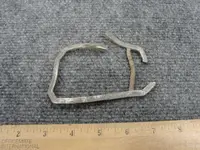
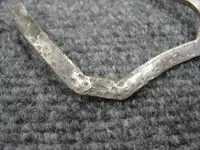
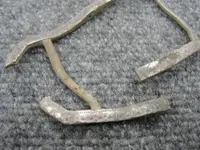






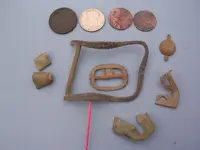
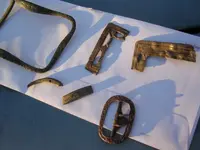
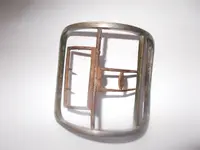
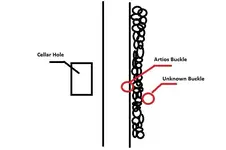

 The history that the pieces represent is the best part of the hunt and I almost like it better when I find pieces like this that blow my original theories out of the water.
The history that the pieces represent is the best part of the hunt and I almost like it better when I find pieces like this that blow my original theories out of the water. 